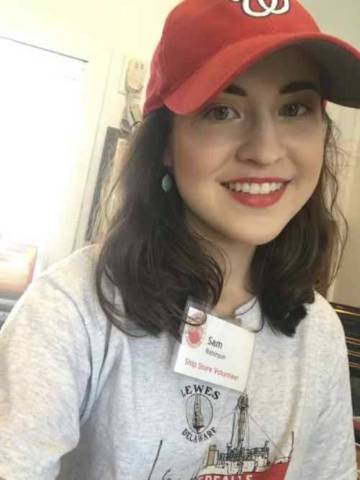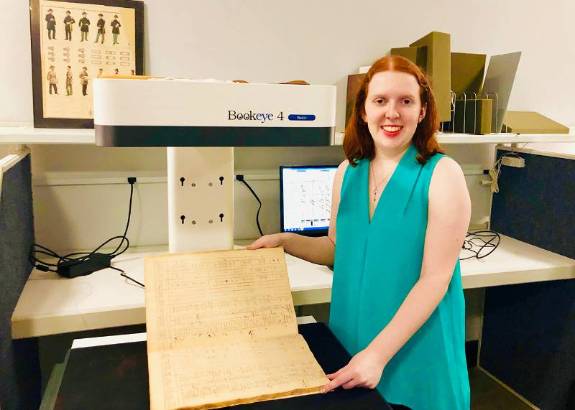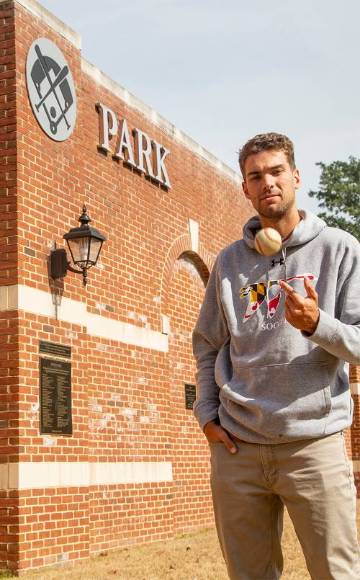
MAJOR
EXTRACURRICULAR ACTIVITIES
- Student Archives Assistant
SUPPORT FROM DONOR PROGRAM
- The Hodson Trust

Keeping The Light
Samantha Robinson
Class of 2021 • Pasadena, Maryland
It may be hard to imagine in this era of pinpoint GPS accuracy and satellite technology, but there was a time not too long ago when the safety of ships and seamen navigating the American coast depended on a handful of people and lighthouses that floated—known as lightships. During her summer internship in Lewes, Delaware, Samantha Robinson '21 learned firsthand the story one of the nation's few remaining lightships, called Overfalls.
“Most people start off the tour with, ‘What is a lightship?' because people don't know,” says Robinson, a history major. “I had to learn about the Overfalls itself, and there's a lot of boat terminology and concepts you have to know. I also learned a lot about Coast Guard history.”
Anchored in dangerous or navigationally significant areas, lightships served as floating lighthouses, foghorns, and radio beacons for navigation between 1820 and 1983. They were manned by small crews that spent long, lonely hours at sea going nowhere. The duty was dangerous and hard; crews suffered all manner of violent weather, they were targeted by enemy forces during WW II, and since ships purposely homed in on their signals, there were countless close calls and over a hundred collisions, five of which sunk the lightships that were hit.
Robinson worked for the Overfalls Foundation, which formed and has worked for the restoration of a lightship that began its service in 1938 at the east end of Long Island Sound, later moved to Cross Rip near Martha's Vineyard, and ended its career in 1972 at the entrance to Boston Harbor. In 1973, the Coast Guard donated the ship to the Lewes Historical Society, which named her in honor of the lightships that served at the Overfalls station at the exposed and often unruly mouth of the Delaware Bay. The ship is a National Historic Landmark, now fully restored and the undisputed centerpiece of the public park along the Lewes and Rehoboth Canal in Lewes.
During her internship, Robinson learned all this history and more. Using her computer skills, she helped catalog artifacts and photographs, improved record-keeping, and helped with social media. She worked as a docent in the foundation's welcome center answering phones and providing information to visitors. She helped archive materials that the foundation had in storage, gaining access to pieces of history that most people don't get to see. And, once she got up to speed on the Overfalls' history, she worked as a guide onboard the ship itself.
Robinson also met a few people who worked on the lightships at the Overfalls station.
“I got to ask them questions about what it was like and what motivated them to work on the ship,” she says. “It was difficult, definitely, more than the average ship because they were kind of out in the middle of nowhere for weeks at time.”

